With over 6,000 species, lizards are a squamate collection of reptiles that vary in size from tiny chameleons to enormous Komodo dragons. With the exception of Antarctica, lizards are indigenous to every continent and the majority of oceanic island chains. As you can expect, there are a plethora of predators that hunt lizards.
In order to survive, lizards have developed a number of antipredator changes, such as venom, camouflage, reflex bleeding, and the capacity to give up and regenerate their tail. A lizard is a food source of many different species and has numerous predators.
Let’s take a look at what animals naturally hunt and even consume these cold-blooded creatures!
1. Cats
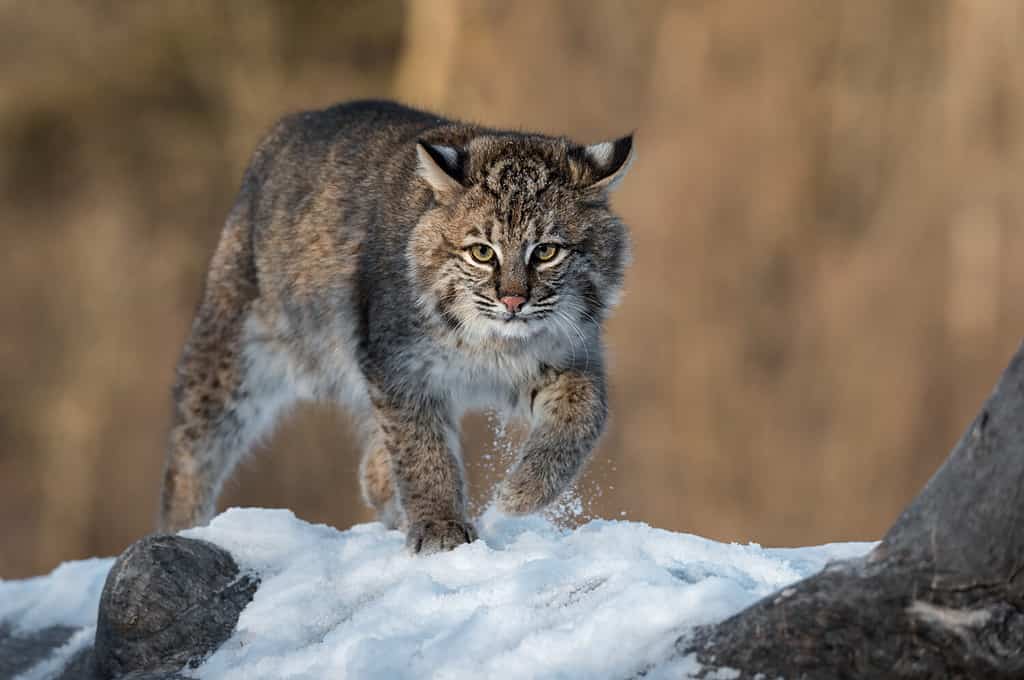
Bobcats are one of the larger felines that dine on lizards.
©Holly Kuchera/Shutterstock.com
Lizards are consumed by cats of all kinds. Domestic, feral, and big wildcats all hunt these creatures. Cats are skilled hunters that take down a variety of small game. Cats have curved, razor-sharp retractable claws that they use to cling to lizards and prevent them from fleeing.
They also have well-honed, powerful teeth that are ideal for taking down small animals. Many times, domestic house cats will avoid eating lizards because their livers have toxic parasites.
2. Hawks

Hawks have a 30-mile field of vision!
©abentson/ via Getty Images
Because of their keen eyesight, hawks are able to identify lizards hiding in trees, shrubs, or the ground. Even though they frequently eat rats, rabbits, and various other tiny creatures, these birds will not turn down a lizard.
Occasionally, hawks will either dive on lizards as they are skittering across the ground or snag them from the limbs of a tree. A lizard has a slim chance when it comes to escaping an expert hunter like a hawk.
Their best lines of defense are to hide or crawl into a small hole out of the hawk’s sight.
3. Mongoose
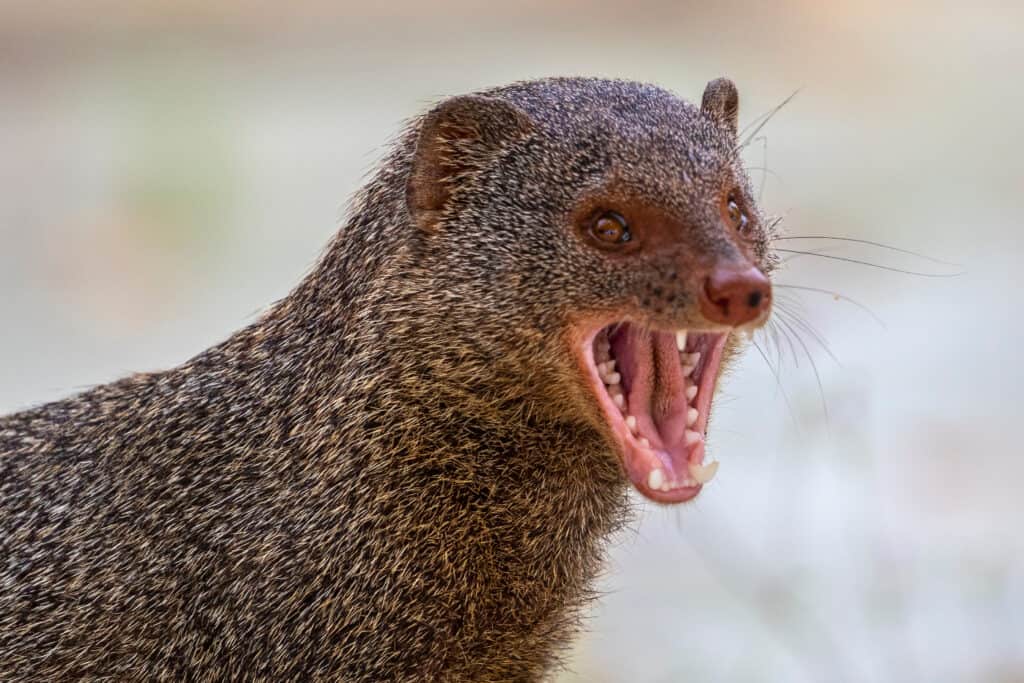
Mongoose also eat nuts, berries, and small animals.
©Rajeev Amaratunga/Shutterstock.com
Although it is classified as a different species, mongooses are small mammals that look like weasels in many cases. Though they prefer to eat insects, these animals will devour lizards if they come across them.
Quick and nimble, mongooses consume lizards, bugs, snakes, and other tiny beings. Moreover, mongooses are well-known for challenging and devouring deadly snakes, including the incredibly agile King Cobra.
The mongoose has no concerns about ambushing or attacking from behind like other predators do. With velocity, disposition, and razor-sharp teeth, they will launch an immediate attack.
They just grab the lizard and devour it before the lizard is even aware of what is happening.
4. Owls

Some lizards are active at night, making them prey for owls.
©Miles, Bob, Public domain, via Wikimedia Commons – License
Since several owls are nocturnal, they often eat rodents, mice, and bunnies that are active at night. Nonetheless, certain owls are awake throughout the day, and these large, eyeball-filled birds consume a lot of lizards.
Burrowing owls hunt for food that scuttles around throughout the day because they are on the ground for extended periods of time. They consume bugs, small birds, and naturally, reptiles.
The only thing that lizards are able to do when burrowing owls notice them is to remain motionless and wait until another thing catches the bird’s discerning eyes.
5. Raccoons
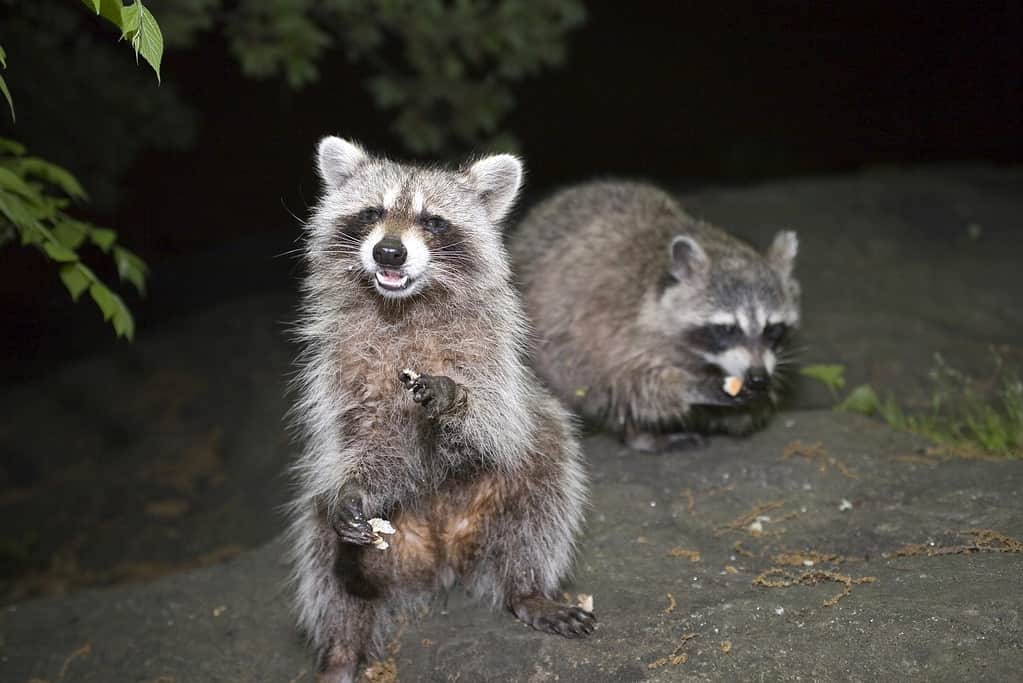
Raccoons will eat just about anything, including lizards.
©iStock.com/eddtoro
Being omnivores, raccoons devour virtually anything that they can get their soiled, clumsy hands on. They consume fish, frogs, bugs, and, yes, lizards. With their short, scaly legs, lizards can move quite quickly, even outpacing raccoons.
However, because raccoons are cunning creatures, they must remain vigilant. These ring-tailed thieves can quickly grab lizards that are sluggish or unwary and begin to devour them.
With any luck, the lizard can be able to escape the raccoon by enthusiastically hissing or dropping its tail. The lizard might be able to escape with this little diversion, but the majority of the time the raccoon emerges victorious, full of lizards in its belly.
6. Snakes
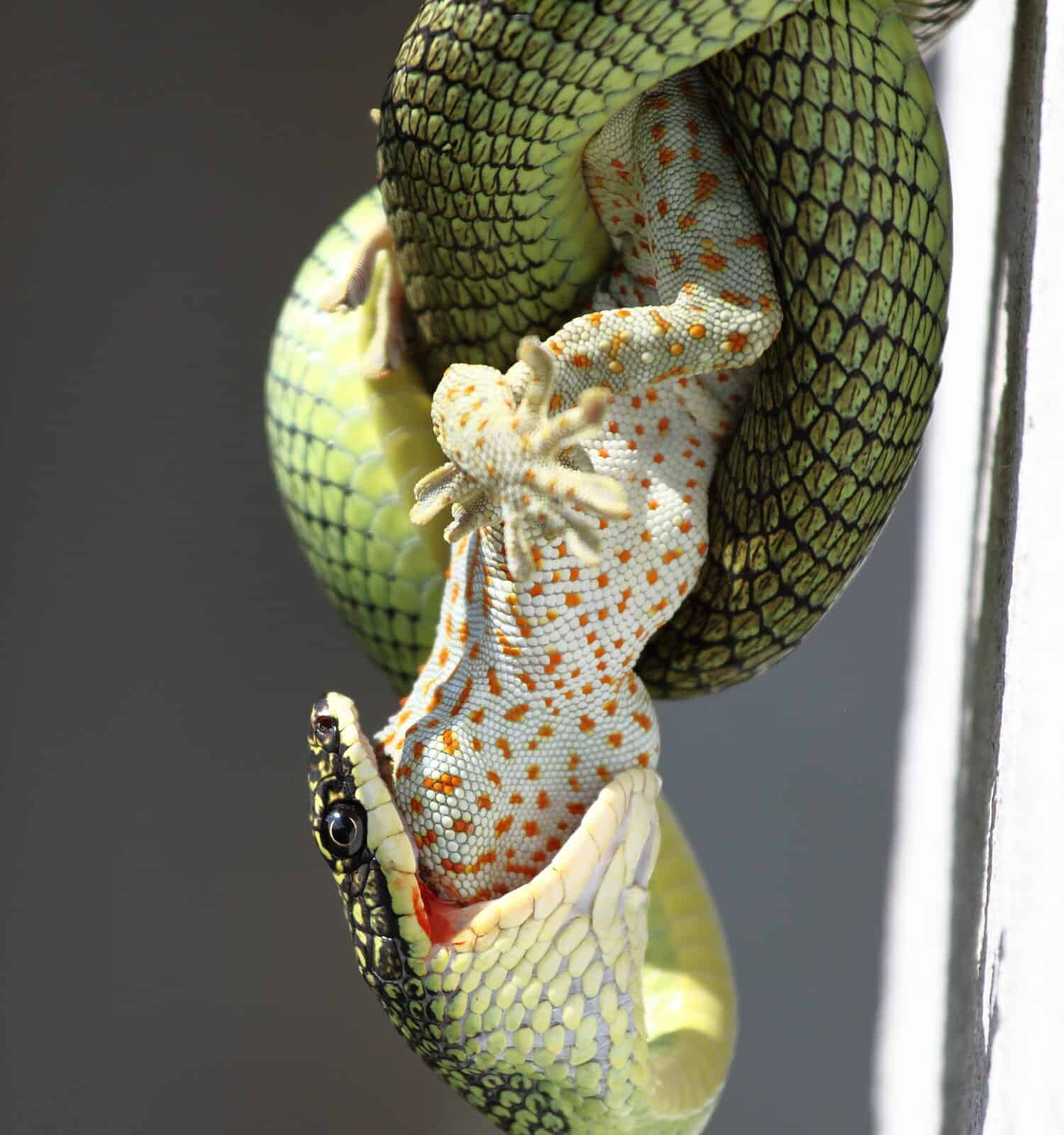
Many snakes will eat lizards head-first.
©Trahcus/Shutterstock.com
This animal is a formidable predator that hunts lizards, even though it lacks limbs. Although you would think that lizards would effortlessly elude snakes, these crafty predators have a variety of cunning techniques.
Snakes are experts at remaining undetected in public. They are able to blend in perfectly with the environment and remain still for hours at a time. These are strategies used by snakes to sneak up on lizards along with other victims.
Snakes also use their venom as a weapon. With their razor-sharp teeth, vipers and other deadly snakes attack their unsuspecting victims, release their venom, and then take their sweet time enjoying their dinner.
Constrictors also frequently employ the ambush strategy to subdue lizards; however, instead of biting and holding on to their prey, they encircle it with their bodies. The snake clenches and presses more forcefully until the lizard suffocates as it struggles.
When the lizard’s heart stops beating, the snake eats it whole.
7. Foxes

Foxes will also eat rodents and birds.
©RT Images/Shutterstock.com
Quiet and sly hunters, foxes are particularly active at night. To locate food for themselves, they make use of their keen senses of hearing, smell, and vision.
The fox will use its feet to leap on anything it can consume. The fox uses its powerful teeth to bite its prey until it becomes immobile, and it also has semi-retractable claws.
If a fox happens to chase down a lizard, it will need to find a suitable hiding place. Since foxes are excellent diggers, a lizard that burrows down could eventually be unearthed and devoured.
8. Alligators
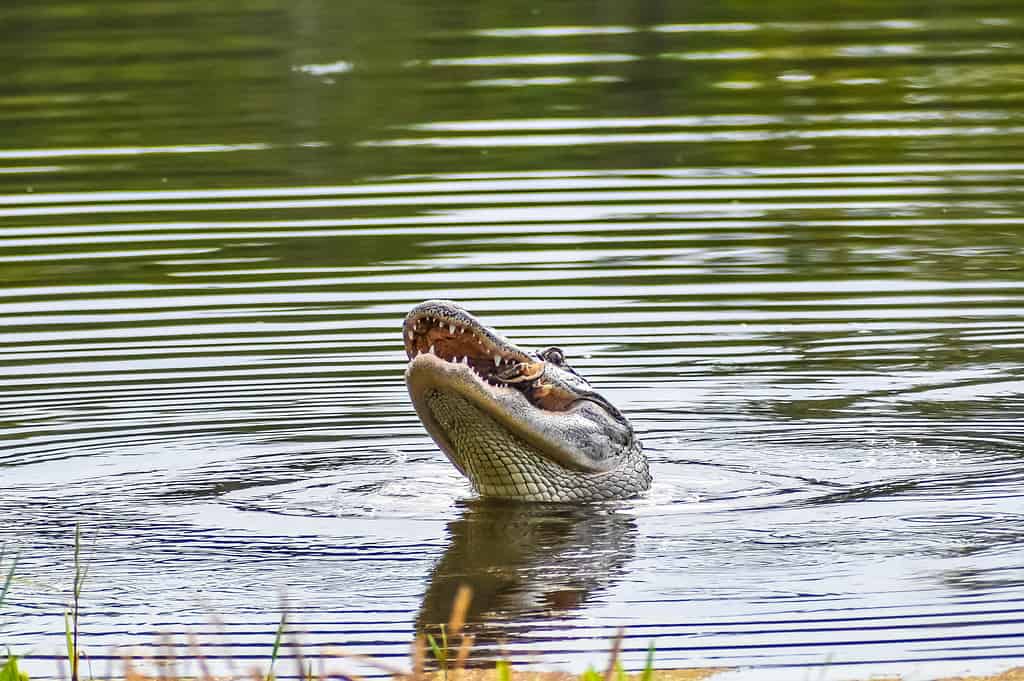
Alligators
will eat unsuspecting turtles and lizards whole.
©Jaimie Tuchman/iStock / Getty Images Plus via Getty Images
Although alligators and crocodiles are reptiles, they are not lizards, despite their deceiving appearance. Not that it would make a difference; lizards still occasionally consume their own. Since they are regarded as apex predators, crocodiles frequently consume lizards, particularly when they are young.
Bigger crocs and gators look for filling meals such as big fish, large mammals, and birds of prey, but they frequently consume monitor lizards. Because they enjoy eating alligator and crocodile eggs, monitor lizards are somewhat disliked by crocodilians.
If the nests are left undisturbed, these massive lizards will raid them and eat the whole clutch.
9. Spiders

Like many humans, lizards fear large spiders.
©RebeccaBloomPhoto/ via Getty Images
Although spiders are classified as arachnids rather than insects, lizards are unconcerned with this scientific distinction. When they spot a bug, they become hungry. Spiders have seemingly chosen to switch roles after realizing this.
Even though bigger, more menacing tarantulas are capable of defeating smaller lizards! It has been discovered that jumping spiders consume lizards that are two to three times larger than themselves!
It’s likely that you have witnessed jumping spiders scuttling around your property or even inside. They are capable of taking down small, young lizards as well as green anoles. The jumping spider has discovered that it can simply wait for the venom to take effect after biting the lizard.
The spider follows the lizard until it becomes unconscious, at which point it eats it.
10. Water Birds
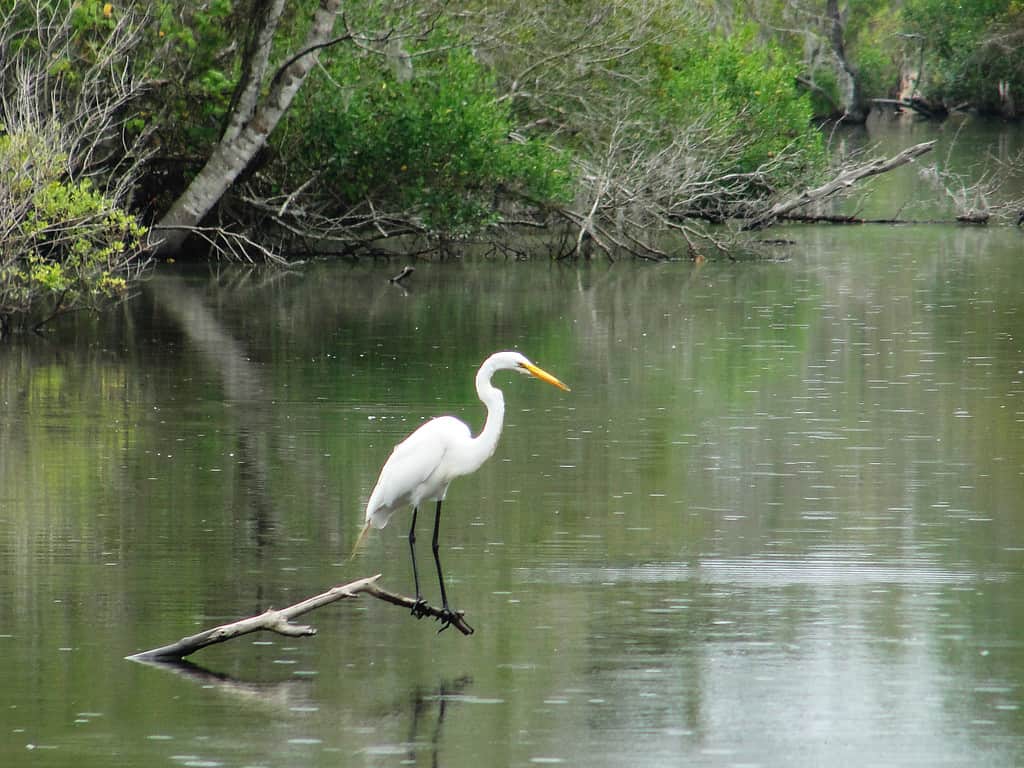
A heron’s diet mostly consists of fish, though they will hunt lizards.
©LittleMouse3/ via Getty Images
Egrets and herons are known to eat fish, amphibians, and turtles by quickly sticking their beak underwater. However, these birds will not think twice to swallow a small reptile if it comes too close. They are yet another predator that hunts lizards.
When close to water, lizards need to be cautious of what is around them. These birds of prey are as swift as snakes when it comes to using their beaks to attack. An unsuspecting lizard doesn’t have time to prepare for a life-saving response when a bird decides to attack.
11. Vultures

Vultures are scavenger birds that mostly eat carrion.
©Jesus Cobaleda/Shutterstock.com
Speaking of birds, a vulture will happily eat a lizard! Although their primary food source is dead animals, vultures occasionally prefer a fresh meal. Who can blame them? Lizards can attempt to flee in order to avoid becoming vulture food.
If it fails to work, the lizard might try to get away by hissing, growing larger, or dropping its tail. Since the majority of the creatures that vultures eat are dead, they are not the greatest hunters. If a cunning lizard can outwit a hulking vulture, it might be able to get away.
Summary of Predators That Naturally Hunt Lizards
| Rank | Predatory Animal |
|---|---|
| 1 | Cats |
| 2 | Hawks |
| 3 | Mongoose |
| 4 | Owls |
| 5 | Raccoons |
| 6 | Snakes |
| 7 | Foxes |
| 8 | Alligators |
| 9 | Spiders |
| 10 | Water Birds |
| 11 | Vultures |
The photo featured at the top of this post is © PetlinDmitry/iStock / Getty Images Plus via Getty Images
Thank you for reading! Have some feedback for us? Contact the AZ Animals editorial team.






